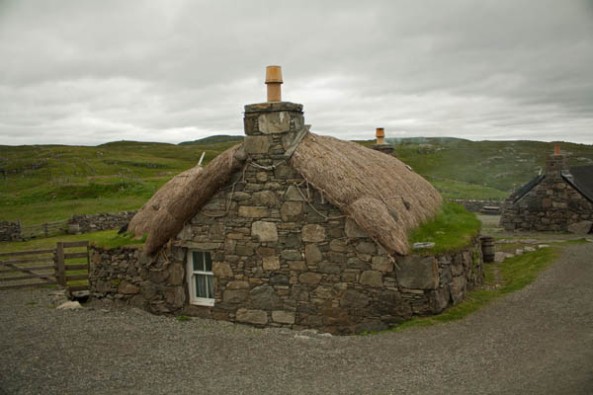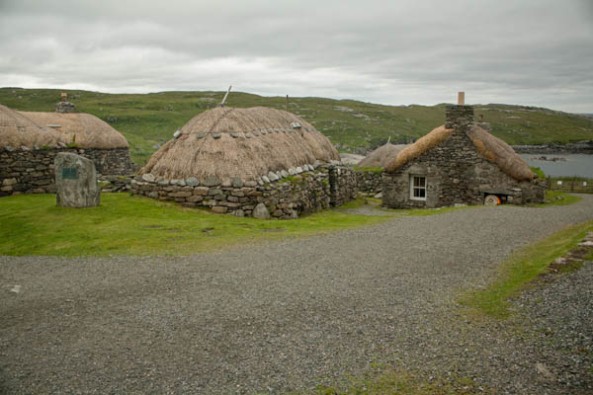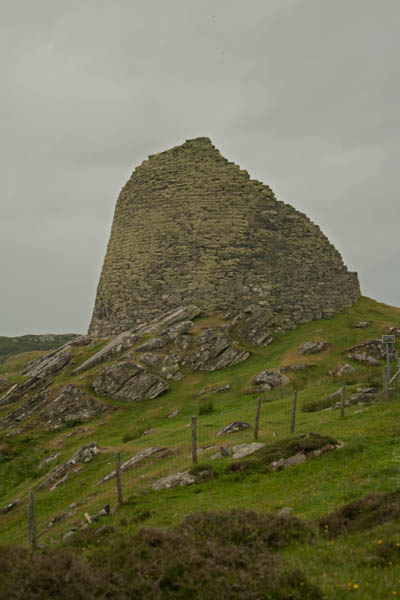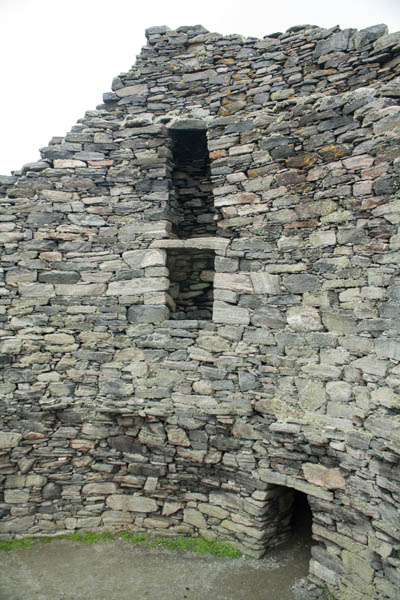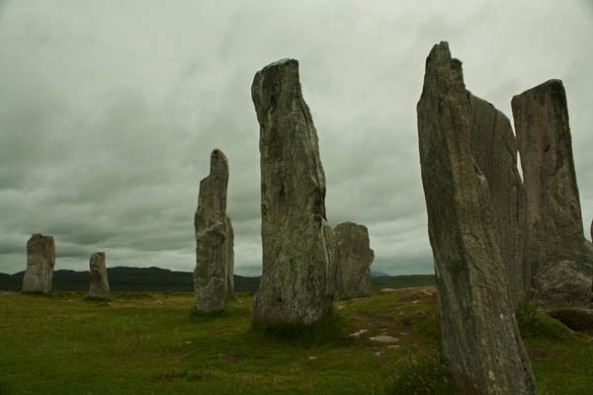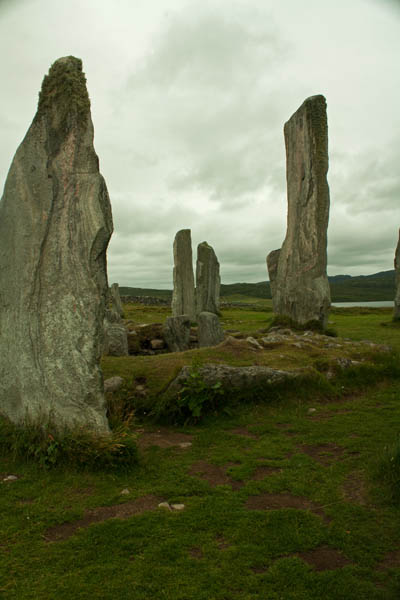Today, we headed out in the direction of the Arnol to see the Blackhouses. The Blackhouse provided an insight into what island life may have been like up to 150 years ago up until the early 1970s. The roofs are thatched with cereal straw over turf and then weighted down with large stones tied down each side of the roof.
I managed to set the camera down and get a lovely shot of the peat fire that was burning on the floor in the centre of the blackhouse. As there are no chimneys in the blockhouses, it’s the burning peat that gives the houses it’s name because the soot from the peat fire coats the interior of the homes, and smoke escaped through the roof. The houses not only held residence for people but also domestic animals and livestock. As we were in there for some time, the smell from the peat fire clung to my clothing. It was quite a nice smelling earthy scent. Outside, there was a pile of peat drying in order to burn later.
[/caption]As we drove down the A858 Barraid an Duin, we came upon the largest whale jaw bone being used as a gateway arch in someone’s yard.
Our tour guide next took us to Carloway Harris Tweeds, to a local weaver of Harris Tweed, Norman MacKenzie. His specialty is working with single width (60cm / 24in), and doing more customized weaving, compared with some of the other weavers hired by the mills that use double width (120cm / 48in). While I was looking up some information on the weaving, I actually found a YouTube video of the weaver we visited. It was really interesting seeing how he stretched out the yarn to be put on the warps and the shuttle (or weft) and then how the yarn was woven on the loom. It’s all hand-woven, human powered weaving. Authentic Harris Tweed to be officially designated as such, must be woven in the Outer Hebrides of Lewis and Harris, must be pure wool and must be woven in people’s homes. The tweed and the process is regulated by The Harris Tweed Authority – Ùghdarras a Chlò Hearaich (Guardians of the Orb).
We then headed up to a Gearrannan Baile-Tughaidh Blackhouse Village where they’ve got blackhouses that had been converted inside and are being used for vacation spots. It looked amazing and something I’d love to try some day to stay for a visit. There are four cottages; one sleeps 2, two that sleep 4-5, and one that sleeps up to 14.
Continuing on our adventures, we headed over to the Doune Broch Centre (Ionad an Dùin Mhòir), then up to the Broch itself. The Iron-age broch dominates the crofting village of Dùn Charlabhaigh (Dun Carloway) and it’s one of the largest and best preserved brochs, built sometime around the first century BC, with radiocarbon dating of some remnants within the broch showing it was probably last occupied in 1300 AD. The east wall is 9 metres high and about 14-15 metres in diameter at the base. Like the blackhouses, the brochs also housed people and animals. Because of its position high up on the hill, it provided a great defensive location and had still been used as a defence between disputing clans.
Our next stop of the day was to go see the Calanais Standing Stones. These standing stones here have a smaller circular ritual placement with four length extensions from that centre outward. It is symmetrical, running true east-west; the western half being a true semi-circle but the eastern half is flattened. Construction of the site dates back between 2900 and 2600 BC. There are also two secondary Calanais standing stones sites not far from the main set of stones.
The Uig Chessmenrefers to a Viking chess set discovered on one of the sandy beaches in a small stone chamber, and were made probably around the 12th century. There are pieces held in the National Museum of Scotland in Edinburgh, the British Museum in London, and at the Stornoway Museum. This statue of the King remains at near one of the Uig beaches.
Also near the beach was a hilly field with some highland cattle, including a russet one and a black one. And my final pic of the day was a pretty purple wild flower that a few of us found on the way back to the bus.
We made our way back to Stornoway where we spent our second night, and Thea (one of the women on our tour who was staying at the same B&B that I was) and myself went to supper at the dining hall of one of the local hotels, for a wonderful meal before returning to our Bed & Breakfast after a stop at Tesco’s, which was on the way.


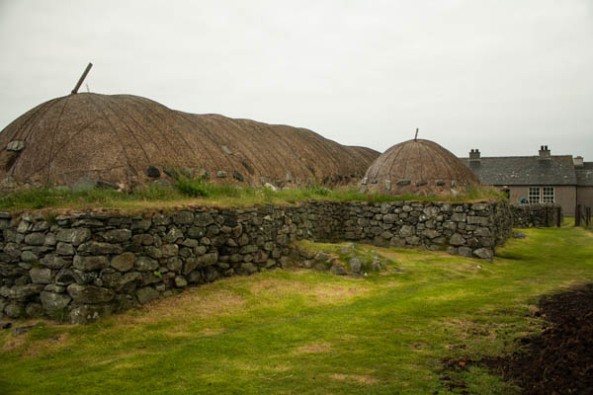

![The Arnol Blackhouse, Arnol, Isle of Lewis. © J. Lynn Stapleton, 1st August 2013[/caption]](https://jlstapletonphotography.me/wp-content/uploads/2013/08/arnolblackhouse04_copy.jpg?w=593&h=395)



